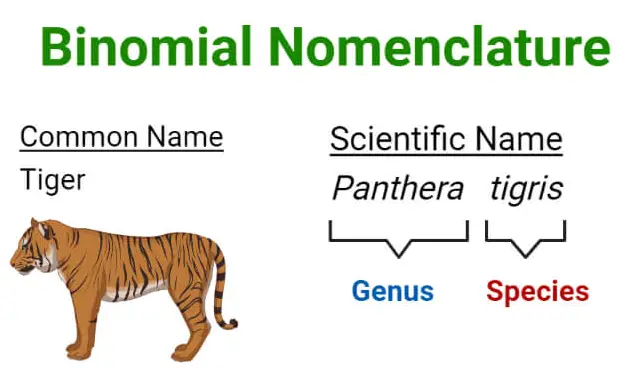Taxonomy, the science of classification, serves as a fundamental aspect of understanding biological diversity. It provides a systematic framework for naming and organizing species in a hierarchical order, ensuring clarity and consistency in scientific communication. The two cornerstone concepts in taxonomy are classification and binomial nomenclature. While often discussed in tandem, they serve distinct purposes within biological sciences.
Classification and binomial nomenclature are two methods used to organize and name living organisms. Classification involves sorting organisms into groups based on shared characteristics, whereas binomial nomenclature is the formal system of naming species with a two-part Latin name. This distinction is crucial for accurate communication and study within the scientific community.
The precision of taxonomy not only facilitates the identification of species but also enhances our understanding of evolutionary relationships. The systematic approach of classification coupled with the specific names given through binomial nomenclature allows scientists and researchers to convey vast amounts of biological information efficiently and effectively.

Taxonomy Basics
Definition of Taxonomy
Taxonomy is the scientific discipline concerned with classifying and naming living organisms based on shared characteristics. The term itself stems from the Greek words “taxis,” meaning arrangement, and “nomia,” meaning method. This field underpins much of biological science, providing a structured system to organize the vast diversity of life into categories that can be universally understood and studied.
Role in Biological Sciences
The role of taxonomy in biological sciences is foundational. It facilitates systematic organization, identification, and communication among scientists. By categorizing organisms, researchers can more easily hypothesize about the relationships among different groups, track environmental changes, and monitor biodiversity. Taxonomy is also pivotal in conservation efforts, helping to identify species that may be endangered or at risk.
Classification Explained
Taxonomic Hierarchy
The taxonomic hierarchy is a system of organization for living organisms that includes several ranks. Starting from the broadest, these ranks are:
- Kingdom
- Phylum
- Class
- Order
- Family
- Genus
- Species
Each level of this hierarchy allows scientists to pinpoint an organism’s placement in the biological world with increasing specificity.
Criteria for Classifying Organisms
Organisms are classified based on physical characteristics, genetic information, and ecological function. The process involves comparing anatomical details, DNA sequences, and the role an organism plays in its environment. This comparative approach helps ensure that the classification reflects evolutionary relationships and functional similarities.
Binomial Nomenclature
Concept Origin
Binomial nomenclature was popularized by Carl Linnaeus in the 18th century. This system of naming organisms with a two-part Latin name revolutionized the scientific community by providing a clear, concise, and universally accepted method for identifying species. The first part of the name represents the genus while the second specifies the species within the genus.
Naming Rules
The rules for binomial nomenclature are precise to ensure consistency and avoid confusion:
- Genus Name: Capitalized and italicized or underlined.
- Species Name: Lowercase and follows the genus name; also italicized or underlined.
- Language: Latin is used to maintain historical and scientific universality.
- Uniqueness: Each species name must be unique within each genus.
This systematic approach helps maintain clarity and uniformity across the vast field of biology.
Key Differences
Basis of Approach
The basis of approach between classification and binomial nomenclature lies in their fundamental purposes:
- Classification: Aims to organize living organisms into groups based on shared characteristics. It is a hierarchical system that reflects biological relationships.
- Binomial Nomenclature: Focuses on naming organisms using a standardized format. It ensures each species is uniquely identified.
Application in Science
The application of classification and binomial nomenclature in science extends beyond simple organization:
- Classification: Essential for evolutionary biology, ecology, and conservation. It helps scientists understand and communicate complex familial and ecological relationships.
- Binomial Nomenclature: Crucial for research and documentation, allowing precise reference to species without ambiguity.

Classification in Detail
Levels of Classification
The classification system in taxonomy consists of multiple hierarchical levels, commonly referred to as the taxonomic ranks. These ranks, from the most general to the most specific, are:
- Kingdom – The highest rank, grouping together all forms of life with fundamental similarities.
- Phylum – Divides kingdoms into groups based on basic structural and functional traits.
- Class – Further divides phyla based on more detailed similarities.
- Order – Sorts classes into more specific groups.
- Family – Groups orders into families based on closer evolutionary relationships.
- Genus – A subdivision of families, bringing together species that are very closely related.
- Species – The most specific classification, uniquely identifying organisms that can interbreed and produce fertile offspring.
Examples and Use Cases
In the study of biodiversity, classification is crucial. For instance, the classification of the giant panda first placed it under the raccoon family but was later revised to the bear family, reflecting more accurate genetic data. This reclassification has significant implications for conservation strategies and biological understanding.
Binomial Nomenclature in Practice
Famous Examples
One of the most recognized examples of binomial nomenclature is Homo sapiens, the name assigned to human beings. Another example is the common daisy, classified as Bellis perennis. These names, universal across scientific communities, avoid the confusion of common names that vary by region and language.
Practical Implications
The practical use of binomial nomenclature extends beyond academic circles. It plays a crucial role in fields like agriculture, where the precise identification of plant species can affect crop production strategies and pest control.
Importance in Research
Impact on Scientific Studies
Taxonomic classification and binomial nomenclature significantly impact scientific studies by providing a framework for organizing knowledge. Researchers rely on these classifications to predict characteristics of similar species, study ecological interactions, and trace the evolutionary history of groups.
Benefits for Biodiversity
Taxonomy aids in biodiversity conservation by identifying species richness and endemism within regions, guiding conservation priorities and actions. Accurate classification is vital for assessing the health of ecosystems and proposing measures to protect endangered species.
Challenges and Issues
Common Confusions
A frequent issue in taxonomy is the occurrence of synonyms—different names for the same species, arising from independent classifications. This can lead to duplication of records and miscommunication among researchers.
Resolution Strategies
To address these challenges, taxonomists adhere to strict naming conventions and increasingly rely on genetic data to resolve ambiguities. International databases and committees also standardize names to maintain consistency.
Future Prospects
Technological Advancements
Recent advances in DNA sequencing and bioinformatics are transforming taxonomy. These technologies allow for more precise classifications based on genetic information, leading to revisions in the taxonomic hierarchy that reflect better understanding of evolutionary relationships.
Predictions and Trends
The future of taxonomy is likely to see increased reliance on molecular data, along with integrative approaches that combine traditional morphology with advanced genetics. This will enhance the accuracy of classifications and foster a deeper understanding of biodiversity dynamics.
Frequently Asked Questions
What is Taxonomy?
Taxonomy is the science of classifying living things. This system helps scientists communicate about species and understand the evolutionary relationships between them by organizing species into a hierarchy of categories such as kingdom, phylum, class, order, family, genus, and species.
How does Classification Work?
Classification works by grouping organisms into categories based on shared characteristics. The major taxonomic categories from broad to specific are: kingdom, phylum, class, order, family, genus, and species. This system helps in organizing the vast diversity of life and understanding the relationships between different organisms.
What is Binomial Nomenclature?
Binomial nomenclature is a formal system of naming species. Each species is given a two-part name using Latin words; the first part indicates the genus and the second the specific epithet, which together uniquely identify each species. For example, the human species is named Homo sapiens.
Why are Classification and Binomial Nomenclature Important?
Classification and binomial nomenclature are essential because they allow scientists and researchers to accurately identify and discuss organisms. They help in documenting the diversity of life and in the study of evolutionary biology, conservation, and many other scientific disciplines.
How Do Classification and Binomial Nomenclature Differ?
While both classification and binomial nomenclature are used to organize biological information, classification groups organisms based on shared characteristics into a hierarchy of categories. In contrast, binomial nomenclature provides a unique two-part Latin name to each species within the hierarchy.
Conclusion
Taxonomy’s dual tools of classification and binomial nomenclature are indispensable for the study of biology. They provide a structured method to identify, name, and categorize the myriad forms of life, which is essential for scientific clarity and communication. Through these systems, scientists can track and share biological data efficiently across the global scientific community.
The evolution of taxonomy continues to shape our understanding of the natural world. As we discover more species and deepen our understanding of evolutionary pathways, the methods of classification and binomial nomenclature adapt, enhancing our ability to explore, document, and conserve biodiversity. This ongoing process underscores the dynamic nature of science and our ever-expanding knowledge of life on Earth.

